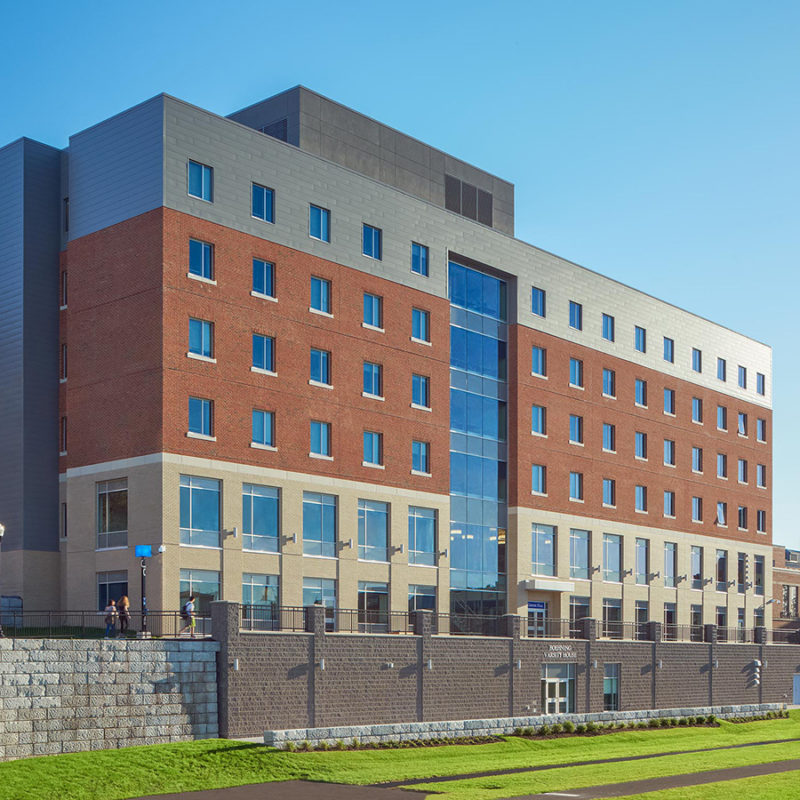Building on a site with a hill is no longer a constraint.
Mechanically stabilized earth (MSE) structures allow owners to safely and securely utilize the square footage of a site, which is often not considered.
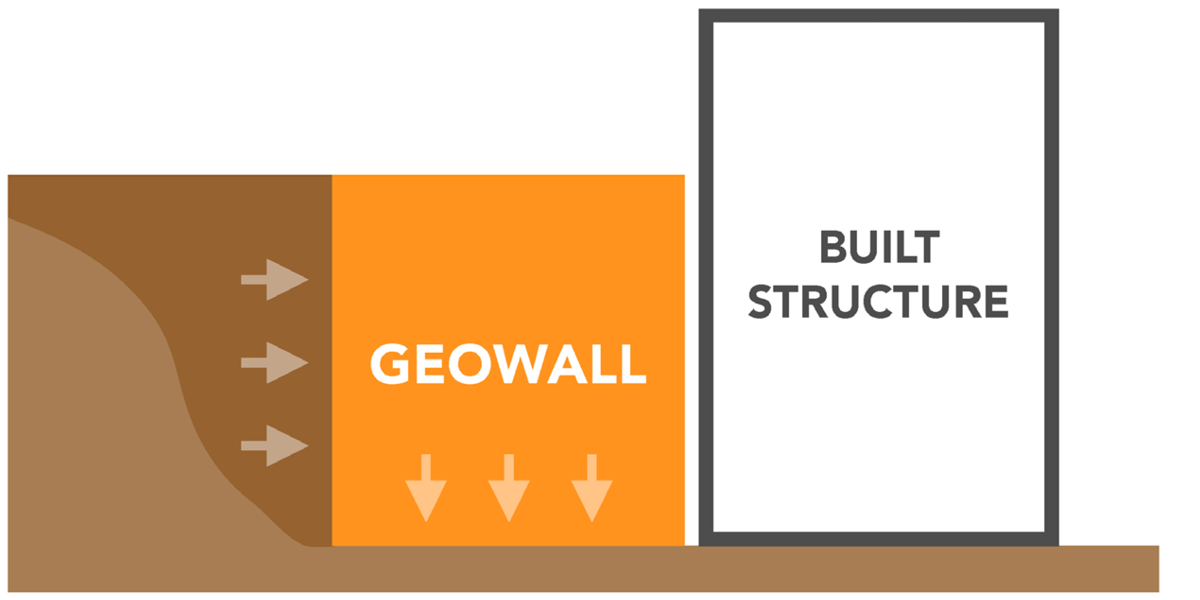 Oftentimes we build structures into an existing hillside to take advantage of our site. Typically, the structure is cut into the hill and requires a very large foundation to hold back the earth against a vertical surface.
Oftentimes we build structures into an existing hillside to take advantage of our site. Typically, the structure is cut into the hill and requires a very large foundation to hold back the earth against a vertical surface.
The most common solution, a retaining wall, can carry its own set of limitations. Retaining walls can be costly and time consuming to construct. There are structural limitations as well. The higher the wall, the more it wants to flex and deflect at the top. Plus, the greater pressure from deeper soil may result in very large footings and heavy wall reinforcement.
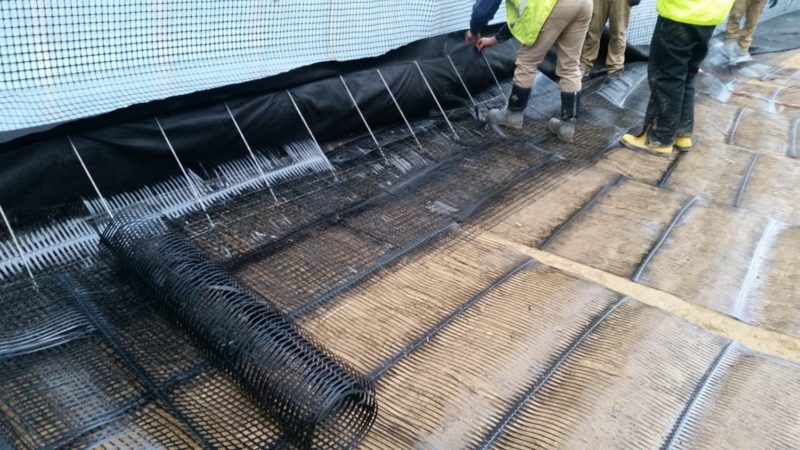
Geowalls
An emerging alternative to retaining walls is a mechanically stabilized earth structure – informally referred to as a “geowall.” This is basically a large reinforced block of backfill, creating a rigid body that resists the lateral earth pressure by itself. By locating this reinforced mass adjacent to, but not touching, the building, the lateral load is kept free of the building and its foundation.
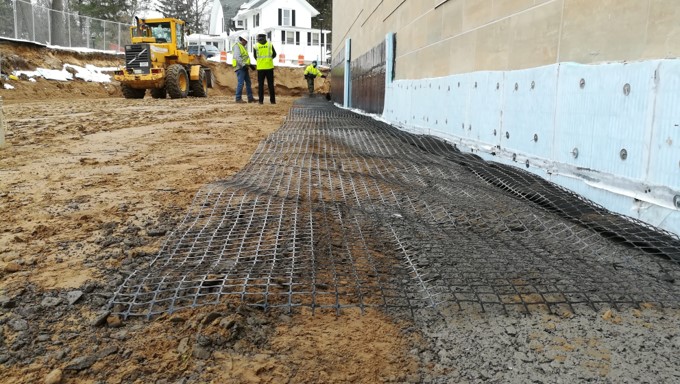
Reinforced Earth Construction
The geowall is built up in 18-inch layers of compacted earth fill, starting at the foundation line. First, an L-shaped wire “basket” is placed down, facing the building, creating a gap between the geowall and the building foundation to ensure no load transfer.
A uniaxial geogrid is the backbone of the system and creates each layer’s base. It hooks over the basket’s connecting loops, is pulled back tight to the depth of the geowall (designed based on the retained soil height), and then staked in place. Locking tail strut braces are added along the length of the basket to keep it from deflecting when the fill pushes up against it. The layer is now ready to be filled.
The fill consists of a front-facing layer of rock or stone, then soil. Ideally, onsite material is used, but depending on the native soil type, imported fill may be necessary. The backfill is spread across the layer and compacted with rollers, building up to 18 inches. Another uniaxial geogrid and basket starts the next layer. A testing agency monitors the construction and tests for adequate compaction.
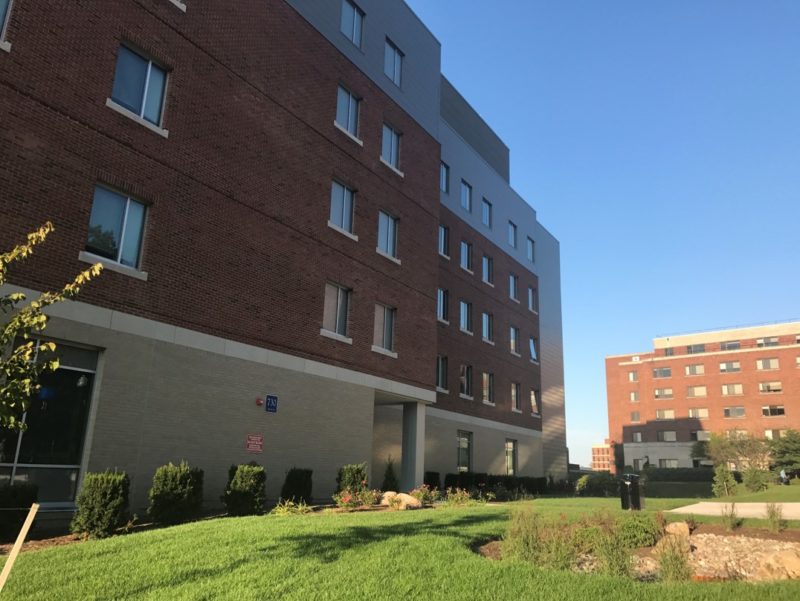
Finished Landscape
As the fill approaches finished grade, the top few layers cantilever toward the building, until the top layer touches the foundation. Theoretically this doesn’t exert any force on the building; however, we design for a minimal strip of horizontal load as a precaution against any shift.
The top layer butting against the building can be paved or landscaped. Since it’s only 18 inches deep, shrubs, flowers, and grass can be planted (no big trees or deep roots). Utilities and mechanicals must be kept out of the geowall construction, as it can’t be excavated for repairs.
When finished, you’ve created a cost-effective alternative to heavy retaining structures − one you’d never know you were standing on.
